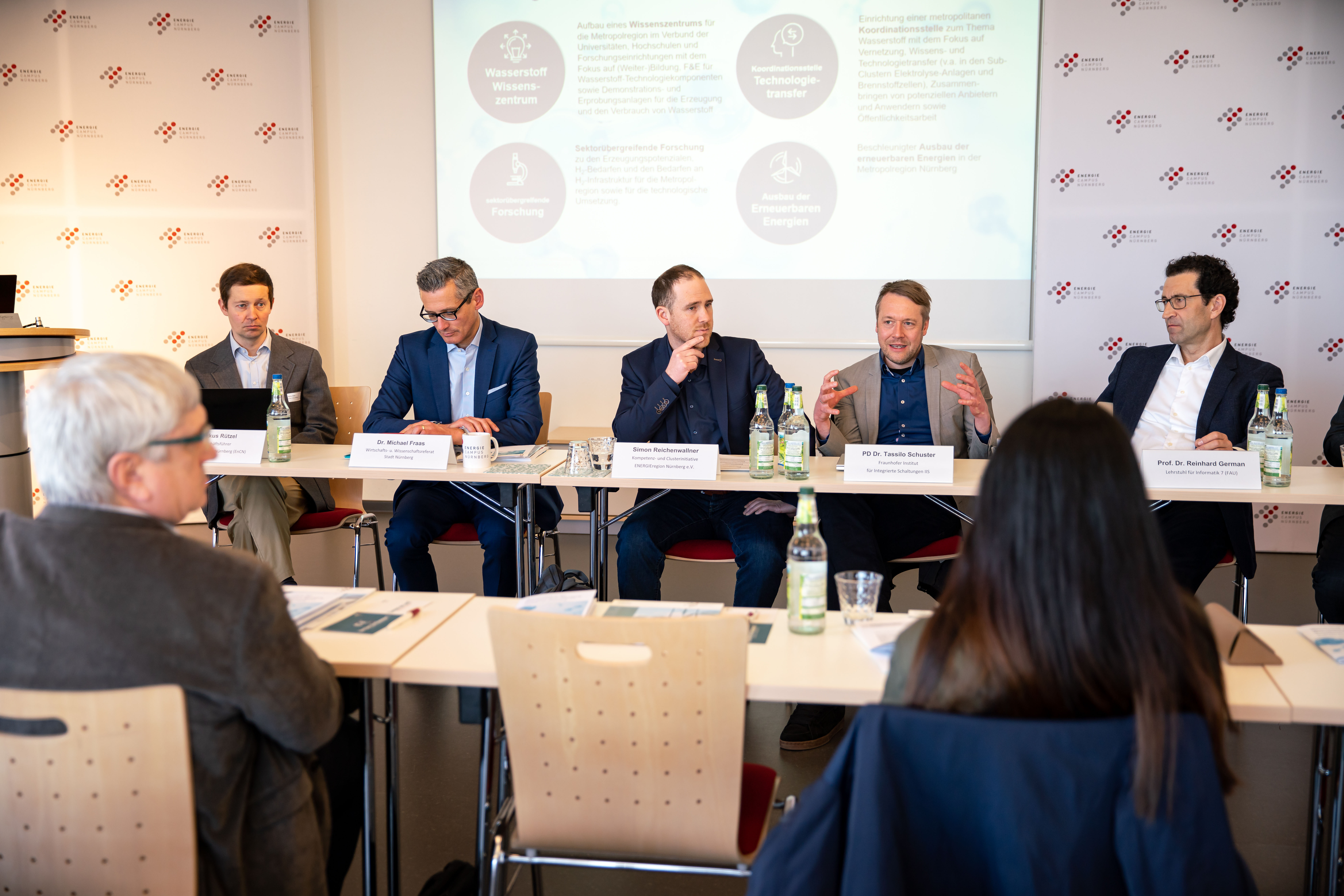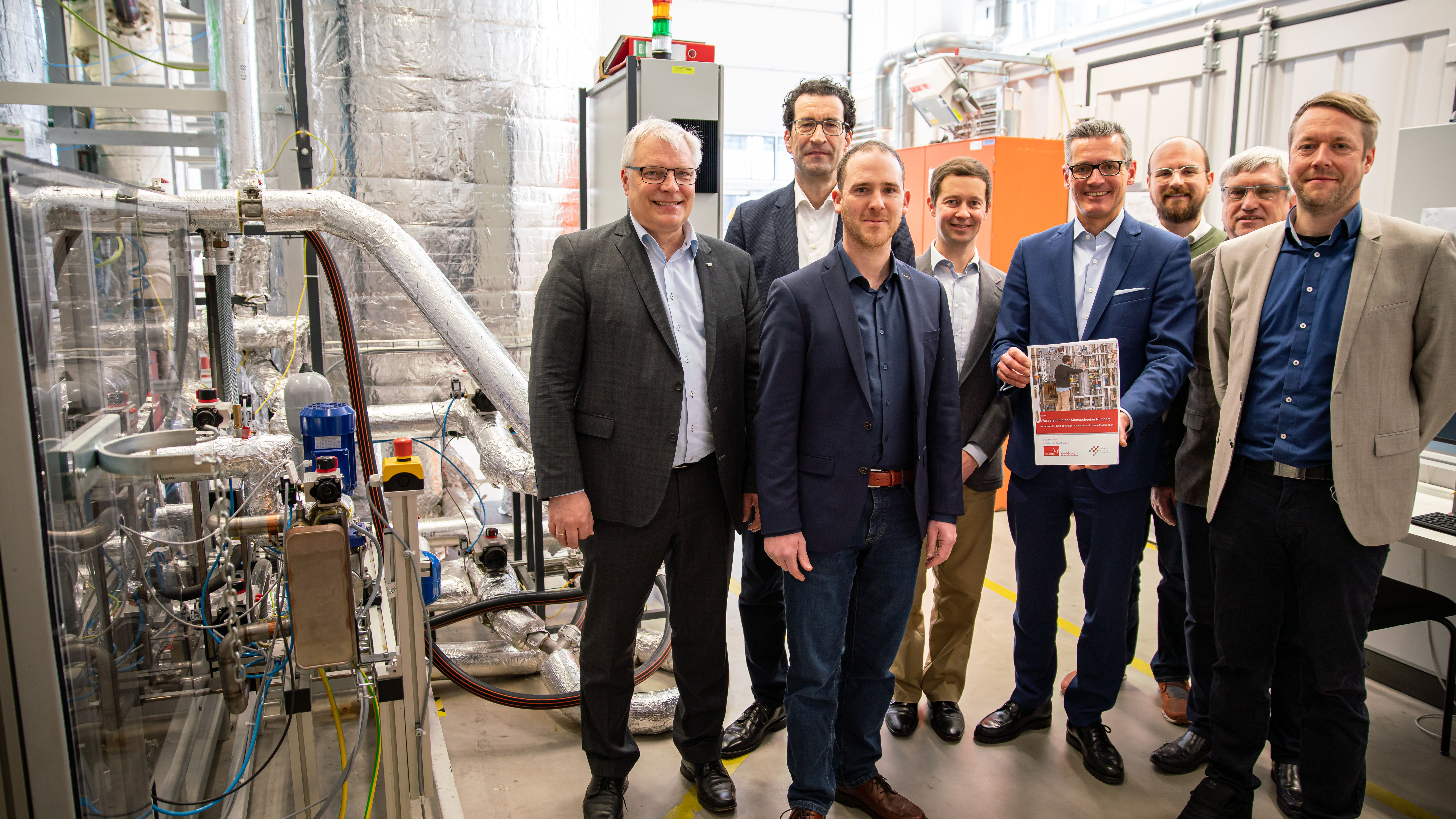Hydrogen is one of the beacons of hope in the fight against climate change, and it is also a promising business model for companies. Fraunhofer IIS has thorough methodological expertise in various application areas of the hydrogen economy. Now the city of Nuremberg, in collaboration with Fraunhofer IIS, is publishing a study on the prospects for the hydrogen economy in the region. To mark the occasion, we interviewed Dr. Tassilo Schuster, Senior Scientist Innovation and Transformation, and Karlheinz Ronge, who heads the Distributed Systems and Security department, about what the future holds for this energy source.
Green hydrogen is currently the subject of much discussion. The political, business and research communities already have high hopes for it as we transition to a net-zero world. What role will this energy source play in our energy system in the future?
Dr. Tassilo Schuster: The Intergovernmental Panel on Climate Change’s Sixth Assessment Report of 2022 makes it clear that much needs to be done. The only way we can keep the rise in global temperature to 1.5 degrees Celsius is if we reduce global emissions by 45 percent by 2030 and cut greenhouse gas emissions to net zero by 2050. This requires a massive rethinking of our current economic and energy system in order to avert irreversible damage to the ecological balance of our planet. Achieving that calls for a double paradigm shift: first, by moving away from our current linear economy to a circular system, and second, by largely replacing the fossil fuels in our energy system with renewable alternatives.
Karlheinz Ronge: Alongside electricity generated from renewable energy, the most important building block of our energy supply will be green hydrogen, which is itself produced mostly using precisely that kind of electricity. Green hydrogen will be used as a fuel in its own right, and it will also serve as a feedstock for synthetic fuels and gases as well as a component in process engineering operations such as steel production or fertilizer manufacture.


